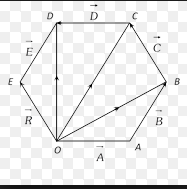Browse by Stream
-
Engineering and Architecture
Exams
Colleges
Predictors
Resources
-
Computer Application and IT
Quick Links
Colleges
-
Pharmacy
Colleges
Resources
-
Hospitality and Tourism
Colleges
Resources
Diploma Colleges
-
Competition
Other Exams
Resources
-
School
Exams
Top Schools
Products & Resources
-
Study Abroad
Top Countries
Student Visas
-
Arts, Commerce & Sciences
Exams
Colleges
Upcoming Events
Resources
-
Management and Business Administration
Exams
Colleges & Courses
Predictors
-
Learn
Online Courses
Engineering Preparation
Medical Preparation
-
Online Courses and Certifications
Top Streams
Specializations
- Digital Marketing Certification Courses
- Cyber Security Certification Courses
- Artificial Intelligence Certification Courses
- Business Analytics Certification Courses
- Data Science Certification Courses
- Cloud Computing Certification Courses
- Machine Learning Certification Courses
- View All Certification Courses
Resources
-
Medicine and Allied Sciences
Colleges
Predictors
Resources
-
Law
Resources
Colleges
-
Animation and Design
Exams
Predictors & Articles
Colleges
Resources
-
Media, Mass Communication and Journalism
Exams
Colleges
Resources
-
Finance & Accounts
Top Courses & Careers
Colleges
Get Answers to all your Questions


- Home
- Engineering
- ABCDEF is a hexagon, where <img alt="\overrightarrow{AB}=\hat{i}-\hat{j},\: \: \: \overrightarrow{BC}=\hat{i}+\hat{j},\: \: \: \overrightarrow{CD}=-2\hat{i}+\hat{j},\overrightarrow{DE}=-\hat{i},\:
ABCDEF is a hexagon, where then vector
equals
Option: 1
Option: 2
Option: 3
Option: 4
Answers (1)

As we learned
Polygon Law -
Polygon law of vector addition states that if a number of vectors are represented by side of polygon taken in order, their resultant is fully represented by the closing side of polygon taken opposite order.
- wherein
Resultant of all vectors will be ans will be along
View full answer
JEE Main high-scoring chapters and topics
Study 40% syllabus and score up to 100% marks in JEE


Ask your Query
Register to post Answer